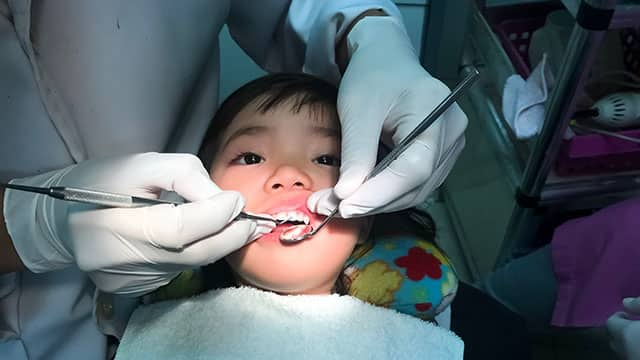Types of Sedation
Sedation in dentistry is often mild and doesn't put the patient to sleep. If your child is fearful about their next oral procedure, sedation can calm the nerves and make them comfortable. Your dentist can safely administer different types of sedative options at their office. Here are the most common types of sedation dentists provide:
Oral Sedation:
This is a pill form sedative that is provided by your dentist. Your child will be instructed to ingest the pill before the procedure begins. Oral sedatives do not put children to sleep, but they do help with relaxation.
Nitrous oxide:
You may know it as laughing gas; nitrous oxide is a gas sedative inhaled through a mask. A combination of nitrous oxide and oxygen will keep your child calm and reduce anxiety levels in just a few minutes. Once the procedure is all done, your child will be given pure oxygen to eliminate any remaining nitrous oxide.
Intravenous sedation:
IV sedation is another option that can help ease your toddler's nerves; make sure they're not scared of needles first. Intravenous sedation is administered through a needle inserted into the vein, usually behind the hand. Your child will be less aware of all the dental work around them and may not remember much of the procedure.
Before Sedation
One way to ensure that your child has the best possible experience is to prepare them for their dentist's visit. Here are a few things you can do at home before the procedure:
- Avoid giving your child solid foods before sedation.
- Dress your child in loose-fitting, comfortable clothing.
- Remember to tell the dentist about any prescriptions or over-the-counter medications that your child is taking.
- Bring their favorite toy! A comfort item like a stuffed animal or little toy is a great way to help your child feel better.
After Care Instructions
Feelings of grogginess, loss of physical coordination, nausea, and even uncontrollable giggles are normal sedation effects. Your child will need some time to rest and special care after their procedure. Remember to:
- Monitor your child after the treatment.
- Give them soft foods like lukewarm soups, mashed vegetables, or smoothies to avoid discomfort in the mouth.
- Encourage your child to stay hydrated by drinking water.
- Use an ice-pack to help with any swelling.
Your dentist can safely administer dental sedation. You can talk to them about the available options, such as oral sedation, nitrous oxide, or intravenous sedation. These will make your child feel more comfortable and relaxed before their dental procedure. You can ensure that your child has the best possible experience by preparing them for sedation; don't give them solid foods, choose a comfortable outfit, tell your dentist about your child's medical history, and bring a special toy along! Remember to take special care of your little one after the treatment.
This article is intended to promote understanding of and knowledge about general oral health topics. It is not intended to be a substitute for professional advice, diagnosis or treatment. Always seek the advice of your dentist or other qualified healthcare provider with any questions you may have regarding a medical condition or treatment.
ORAL HEALTH QUIZ
What's behind your smile?
Take our Oral Health assessment to get the most from your oral care routine
ORAL HEALTH QUIZ
What's behind your smile?
Take our Oral Health assessment to get the most from your oral care routine
Join Us
Get the best of your oral health routine and take it to the next level with expert advice, recommendations, products and solutions and special offers.
Join Us
Get the best of your oral health routine and take it to the next level with expert advice, recommendations, products and solutions and special offers.















